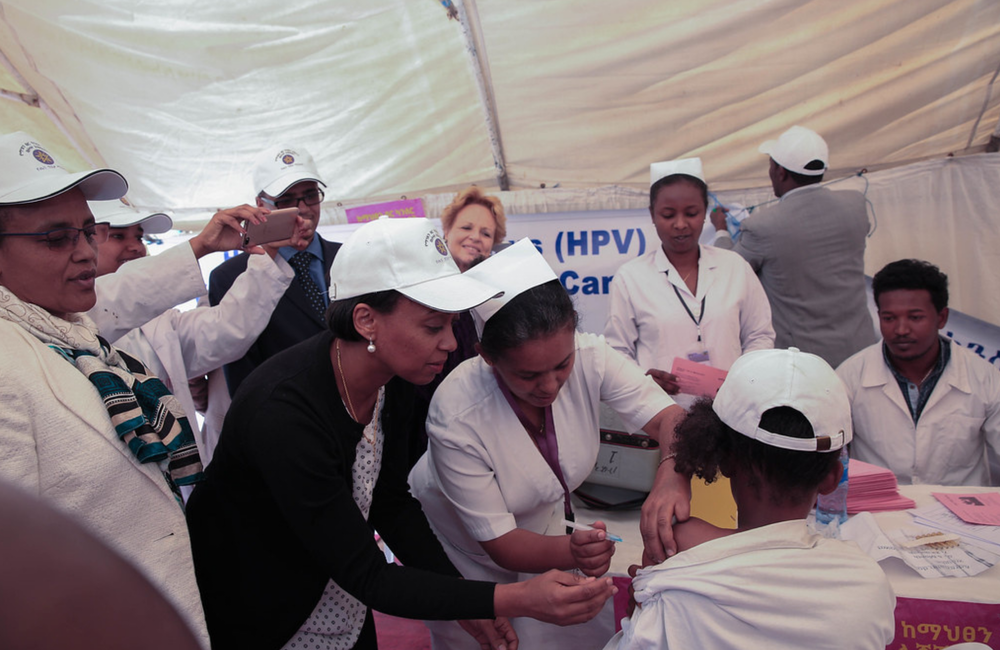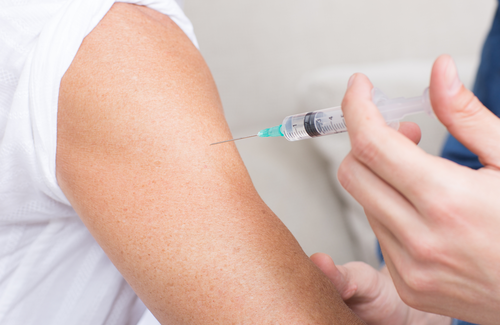
Women with HIV have a sixfold increase in the risk of cervical cancer compared to their HIV-negative peers, investigators report in The Lancet Global Health. They also found that globally 6% of all cases of cervical cancer are in women with HIV. But there were huge regional disparities, with 63% of cervical cancer cases in southern Africa and a fifth of cases in east Africa involving women with HIV compared to well below 1% in some other regions. The authors estimate that 5% of new cervical cancer cases in 2018 were attributable to HIV.
“Women living with HIV have a substantially increased risk for cervical cancer when compared to women without HIV infection,” comment the authors. “In countries with a high burden of both cervical cancer and HIV, it is vital to integrate HIV and cervical cancer care and vaccinate girls against human papillomavirus to secure long-term declines in the future burden of disease.”
Cervical cancer is the fourth most common cancer in women: in 2018 alone, there were more than half a million new cases and 311,000 deaths. Nonetheless, it is one of the most preventable and treatable of all cancers. Recommending a combination of vaccination, screening and treatment, the World Health Organization (WHO) has set the target of eliminating cervical cancer by 2030.
The underlying cause of cervical cancer is persistent infection with high-risk strains of human papillomavirus (HPV). Only a small minority of people infected by HPV will develop cervical cancer: the risk of HPV-related cervical cell changes becoming cancerous is amplified by a number of factors, including immunosuppression caused by untreated HIV.
In 2007, a meta-analysis involving women in higher income countries found that living with HIV was associated with a sixfold increase in the risk of cervical cancer.
A team of investigators led by Dr Dominik Stelzle of the Technical University of Munich and Dr Shona Dalal of WHO wanted to update and expand this research to include low- and middle-income countries.
They therefore conducted a database search for studies examining rates of cervical cancer among women (aged 15 years and over) with HIV in Africa, Asia, Europe and North America. The results of the studies were pooled to estimate the risk of cervical cancer among women with HIV relative to the risk observed in HIV-negative women.
Twenty-four studies were included in the meta-analysis. These studies included 236,127 women living with HIV. The median age at study entry was 38 years and 40% of women with HIV were taking antiretroviral therapy.
The included studies were conducted between 1981 and 2014 and took place in 17 countries (eight in Africa; three in Asia; four in western Europe; two in north America).
"Integrating cervical screening into routine, six-monthly HIV care could mean that pre-cancerous cell changes are spotted early."
There were 2138 cases of cervical cancer overall. Pooling the study results showed that women with HIV had a sixfold increase in the risk of cervical cancer relative to women with HIV (relative risk = 6.07; 95% CI, 4.4-8.37). Secondary analysis that looked at the risk according to study design found comparable figures in research using data from cancer registries (RR = 7.64), cohort studies (RR = 5.68) and case-control studies (RR = 3.78). The risk was elevated in low- and middle-income countries (RR = 6.79) and high income countries (RR = 5.34). These findings were also consistent regardless of study quality and potential bias, year of publication (before or after 2013) and continent.
The investigators also used epidemiological data from 2018 to estimate the number and proportion of cervical cancer cases involving women with HIV in different parts of the world. Globally, there were an estimated 33,000 new cases of cervical cancer among women with HIV in 2018 – 5.8% of all new cases.
Particularly affected was the African region: 64% of all cases of cervical cancer in southern Africa were in women with HIV, as were 27% of cases in eastern Africa, 12% in central Africa and 10% in western Africa. The proportion of cervical cancer cases that were in women living with HIV was below 2% in all other regions.
The age-standardised incidence of HIV-attributable cervical cancer was above 20 per 100,000 in six countries, all in southern and eastern Africa.
The authors say that the increased risk of cervical cancer in women with HIV is likely due to a combination of factors, including:
- Women living with HIV are more likely to acquire an HPV infection and less likely to clear infection than women without HIV.
- The risk of disease progression caused by HIV-related immune suppression – the burden of cervical cancer is especially high among women with a low CD4 cell count and not taking antiretroviral therapy.
- Immune suppression increasing the risk of disease recurrence after treatment.
But the investigators believe that integrating cervical screening into routine, six-monthly HIV care could mean that pre-cancerous cell changes are spotted early, therefore allowing for prompt treatment.
“Expansion of HPV vaccination to areas with HIV high prevalence is especially important to achieve long-term reductions in the overall cervical cancer burden,” comment Dr Stelzle and colleagues. “Cervical cancer screening followed by adequate management and HPV vaccination are the two prevention tools recommended by WHO that are highly effective, with a cost-effectiveness of US$100 or less per disability-adjusted life-year averted in low- and middle-income settings. This cost places these interventions among global so-called best buys for non-communicable disease prevention.”
Both these interventions are also key to the WHO target for cervical cancer elimination within the next ten years. This would rely on the achievement of three goals:
- 90% of girls fully immunised with the HPV vaccine by 15 years of age.
- 70% of women screened for cervical cell changes using high-performance tests by the age of 35 and again by 45.
- 90% of women identified with cervical disease receiving appropriate treatment.
“Eliminating any cancer would have once seemed an impossible dream, but we now have the cost-effective, evidence-based tools to make that dream a reality,” said WHO Director-General Dr Tedros Adhanom Ghebreyesus. “But we can only eliminate cervical cancer as a public health problem if we match the power of the tools we have with unrelenting determination to scale up their use globally.”
Stelzle D et al. Estimates of the global burden of cervical cancer associated with HIV. Lancet Global Health, 16 November 2020 (open access).
Full image credit: National HPV vaccination launching programme at Tesfa Kokeb primary school, Lideta Sub-city, Addis Ababa. UNICEF Ethiopia. Available at www.flickr.com/photos/86783452@N02/45536000644 under a Creative Commons licence CC BY-NC-ND 2.0.

